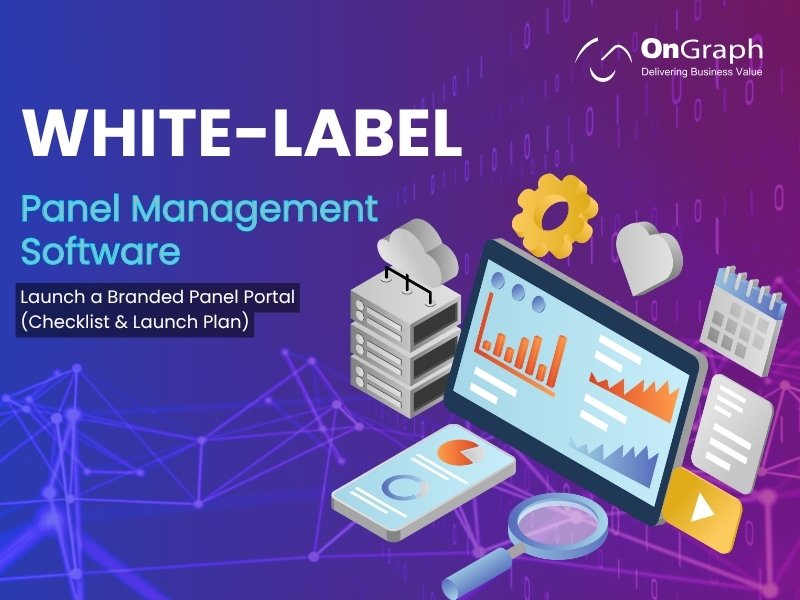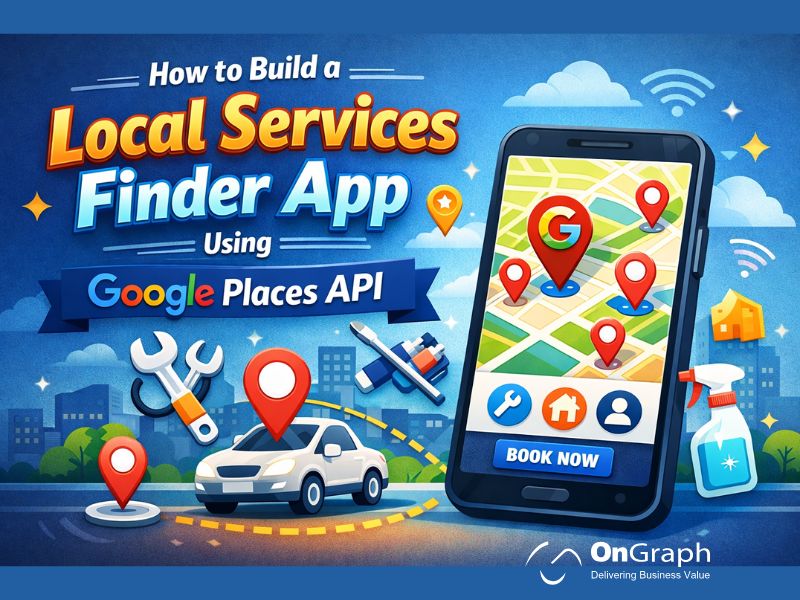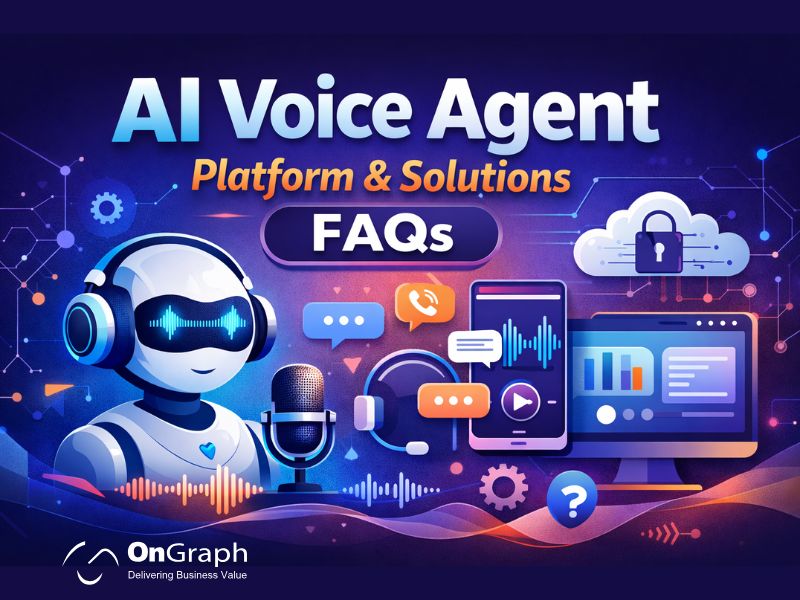In this article
- Why choose a white-label solution?
- Key concepts: the ecosystem you will build
- Launch Plan & Checklist
- Real-World Case Studies & Statistics
- Common Challenges & How to Solve Them
- Tips to Choose the Right Panel Management Tool
- The Role of Panel Management in the Modern Market
- Branded Panel Portal Launch: Summary Checklist
- Final Thoughts
To lead the market, you must use smart software to make better decisions. A robust white label panel management software platform is a game-changer for agencies or in-house research teams that want full control over their panel infrastructure.
This article provides an in-depth guide — from planning to launch — for setting up your branded portal using a panel management platform, covering the full spectrum: recruitment, incentives, data management, rollout, and optimisation.
Why choose a white-label solution?
A white-label panel management software offering gives you the branding, flexibility, and ownership that generic tools don’t.
Rather than relying on a shared platform with limited customisation, you deploy your own portal that reflects your brand identity, workflows, and global reach.
According to industry sources, using a proprietary panel can reduce research cost by ~30% through faster field time and better respondent control.
When you compare standard panel management software, survey panel management software, or an online panel management system, the white-label path stands out because:
- You retain full control of branding, URLs, panelist experience, and data ownership.
- You can tailor the workflow — recruitment, profiling, reward management — exactly to your business model.
- You can integrate your own incentive system, wallet, API connections (e.g., Twilio, payment gateways) rather than being constrained by another vendor’s template.
Key concepts: the ecosystem you will build
Before diving into the launch plan, let’s define the ecosystem you will create with your chosen software. Terms matter, and using this language helps ensure alignment.
- Panel management platform: The core system where you recruit, profile, manage, and reward your panelists.
- Panel recruitment software: The module or function you use to bring new members into your panel.
- Panel data management system: The database and governance system that holds panelist information, profiles, activity logs, rewards, etc.
- Market research panel software: The broader category includes systems for data collection, survey management, analytics, and panel workflows.
- Panel management software solutions: A General phrase for vendors or toolsets that deliver these capabilities.
- Best panel management software: What you will be comparing when choosing a vendor or build path.
- Sample management software: Sometimes overlapping — managing sample/participant lists, quotas, demographics.
Launch Plan & Checklist
Here’s a phased plan you can follow, complete with checklist items for each phase.
Phase 1 – Planning & Requirements
1- Define business goals: e.g., launch branded panel portal by Q4, recruit 10,000 panelists, maintain 5,000 active.
2- Make target jurisdictions: Local (India), global? Multi-currency? Multi-language?
3- Define branding: Domain name, logo, colour scheme, portal URL, UI language.
4- Choose deployment model: On-premise vs cloud vs hybrid. Estimate hosting cost (e.g., 2 CPU / 8 GB RAM for 10,000 users) as discussed in prior calls.
5- List must-have features of the panel management platform: recruitment module, incentive wallet, analytics, fraud detection, API integrations, and multilingual support.
6- Build stakeholder map: marketing, insights team, IT/DevOps, legal/compliance (GDPR, CCPA if global).
7- Draft budget: One-time fee (software + customisation) + monthly hosting + support hours + growth scaling.
8- Risk assessment: Data security, panelist engagement drop-off, reward fraud, and sample fatigue.
Phase 2 – Selection & Build
1- Vendor selection or custom build: Evaluate survey panel management software vs build your own white-label solution.
2- Evaluate existing online panel management system vendors for cost, customisation, and branding.
3- Map workflows: recruitment → screening → profiling → survey invites → incentive allocation → redemption → panelist lifecycle.
4- Define data model: panelist profile fields, unique identifier (PID), segmentation, activity logs.
5- Branding & UI customisation: Replace vendor logo, use your URL, customise registration forms, dashboard, wallet.
6- Set up integrations:
- Reward API (points/gift cards/telecom credits)
- Notification channels (email, SMS, WhatsApp, Facebook Messenger)
- Survey link generation mechanism.
6- Develop fraud detection: digital fingerprinting, bot filters, duplicate checks (as emphasised by panel data management system vendors).
7- Hosting & security: ensure compliance (GDPR etc), secure server setup, backups, encryption at rest & transit.
8- Build documentation & training: admin manuals, panelist FAQs, help desk.
Phase 3 – Recruitment Launch
1- Set up your panel recruitment software or module: campaign builder (SOI/DOI), affiliate tracking, offer URLs, pixel tracking.
2- Create landing page(s) for panelist registration with your brand URL.
3- Define profiling questions & survey: capture gender, birth year, postal code, region, car ownership, etc (as used in your demo).
4- Launch initial campaigns: via email lists, social media, affiliates, and paid ads. Track cost per recruit and quality.
5- Onboard panelists: welcome email, profile update request, first survey offer.
6- Monitor KPIs: number of recruits, % completed profile, % responded to first invite, active vs dormant counts.
7- Incentivise early engagement: offer bonus points/credits for early tasks. Use the system’s wallet to credit.
8- Maintain engagement: send newsletters, thank-you emails, mini surveys, reward redemption reminders.
Phase 4 – Survey Fielding & Management
1- Use your panel management platform to segment eligible panelists, build lists, apply quotas.
2- Send survey invites: via email or via social channels (your portal can generate link + PID).
3- Track completions, monitor drop-offs, and update panelist status.
4- Credit incentive wallet automatically (points/gift cards/telecom credits).
5- Monitor panelist quality: respond time, survey completion rate, fidelity of responses.
6- Refresh panel: identify inactive members, send re-engagement campaign, replace with new recruits.
7- Analyse data: participation metrics, incentive-effectiveness, recruitment cost per completed survey.
8- Pull operations reports: number of invites, completion rate, wallet balance, redemption requests, region segmentation.
Phase 5 – Optimisation & Scaling
1- Review KPIs monthly: active panel size, incentive cost per completed survey, and recruitment ROI.
2- Optimise incentive models: compare points vs cash vs telecom credits and determine which yields higher engagement (refer to your earlier demos’ reward system).
3- Expand geography & languages: if global, add multi-language support, local currencies, time-zone scheduling.
4- Monitor fraud and drop-off: adjust screening, profiling, and remove bad actors.
5- Upgrade infrastructure: if daily active users grow, scale server resources (CPU, RAM, storage).
6- Client and stakeholder feedback: ensure panelist experience is positive (branding, portal ease, redemption speed).
7- Position for growth: sell panel access / white-label portal to clients, build new verticals (B2B, healthcare, etc) under the same system.
8- Document case studies: publish your branded portal results (recruitment numbers, cost savings, insight speed) to demonstrate authority and attract new business.
Real-World Case Studies & Statistics
- According to a blog post on research tool stack, modern panel management software enables teams to stop using spreadsheets and manual processes — which significantly accelerates research operations and improves quality.
- A vendor claims their white-label panel management solution helped clients reduce market research costs by 30% and cut field time by 25%.
- A survey of online research panels shows that having a pre-qualified panel significantly improves response rates compared to ad-hoc recruiting.
- Platforms like Q One emphasise features such as dynamic profiling, predictive targeting, deep analytic,s and fraud detection — features typical of advanced panel data management systems.
These examples point to why building a branded system using white label panel management software can give you a strong competitive edge in the market research ecosystem.
Common Challenges & How to Solve Them
Here are some typical obstacles when implementing a panel portal and how to address them:
- Recruitment inertia: It can take time to build a high-quality panel of tens of thousands. Solution: launch recruitment campaigns early, use affiliate links & offer attractive incentives, and set realistic pacing (e.g., target 5,000 active in year one).
- Panelist engagement drop-off: Many panelists sign up and then become inactive. Solution: Use your incentive wallet and dashboard to reward participation regularly; send reminders; refresh the panel by replacing dormant members.
- Data quality & fraud: Bots, duplicate respondents, and unqualified participants can skew insights. Solution: Use identity-verification tools, digital fingerprinting, rigorous profiling, activity logs, and exclude suspicious behaviour (as offered by panel data management systems).
- Scalability/infrastructure bottlenecks: As your panel size grows, server load, API calls, and data processing times increase. Solution: Plan server sizing (start maybe 2 CPU/8 GB RAM, scale as needed), implement caching, and monitor performance.
- Branding & user experience: If the portal looks generic or branded by the vendor, it can undermine trust. Solution: Ensure full white-label customisation (domain, UI, colours, logo), seamless user UX from registration through rewards redemption.
- Reward/incentive complexity: Managing multiple incentive types (points, cash, telecom credits) can complicate payout and accounting. Solution: Use the built-in wallet module from your panel management platform, integrate reliable APIs for reward fulfillment, and track transactions and redemptions.
- Legal & privacy compliance: Especially for global reach (GDPR, CCPA), you need robust consent, data storage rules, and user rights. Solution: Choose software with a compliant architecture, enable user self-service for data access/deletion, and maintain audit logs.
Tips to Choose the Right Panel Management Tool
When selecting your white-label portal builder, apply the following evaluation criteria:
- Branding & White-Label Readiness – Does the system allow full custom domain, custom UI, portal wording, and multi-language?
- Recruitment & Profiling Capabilities – Can you create campaigns, affiliate tracking, dynamic profiling, quotas?
- Incentive & Wallet Management – Is there a built-in wallet, support for points/cash/telecom credits, API integrations?
- Data & Analytics – Can you segment panelists, track activity, generate reports, and export data easily?
- Scalability & Infrastructure – Can the system scale to your projected active panel size (e.g., 5k, 10k, 100k)? Can you host on your own server?
- Security & Compliance – Are there fraud-prevention tools, consent workflows, data encryption, and international privacy regulations support?
- Support & Customisation – Does the vendor offer custom development hours, support (e.g., first 80 hours free)?
- Cost Model – What are the one-time deployment costs, monthly hosting/support, per-user, or per-feature pricing?
- Ecosystem Integration – Does it integrate with your survey tool, email/SMS/WhatsApp, CRM, analytics stack?
- Future Growth & Flexibility – Can you deploy new panels, add geographies, and monetise the panel portal (sell access) later?
Build Your Own Branded Panel Portal — Get a Free Demo of Our White-Label Panel Management Software Today!
Take full control of your panel data, branding, and rewards with a customizable solution built for modern market researchers.
The Role of Panel Management in the Modern Market
In today’s fast-paced environment, a market research panel software or panel management platform is no longer a “nice-to-have” but a strategic asset. With consumer behaviour shifting rapidly, brands need near real-time insights from engaged, well-profiled audiences. The right panel portal helps you:
- Build proprietary audience assets (not rent external sampling).
- Reduce reliance on third-party panel providers and their associated cost and quality issues.
- Accelerate research turnaround time, delivering insights faster to product, marketing, and leadership teams.
- Gain richer segmentation and profiling data — enabling deeper insights, better targeting, and improved ROI for research initiatives.
- Monetise your panel: organisations and agencies can offer access, thereby creating a new revenue stream.
Branded Panel Portal Launch: Summary Checklist
Here’s your rapid-fire checklist you can tick off as you go:
- Define business model & goals
- Choose domain & branding
- Choose hosting & deployment model
- Select software (white label panel management software)
- Configure UI branding & customisation
- Set up recruitment module (campaigns, affiliates, pixel tracking)
- Design panelist registration & profiling flows
- Integrate wallet/incentive system (points/cash/telecom)
- Set up fraud detection & data quality controls
- Build analytics, reports & dashboards
- Deploy initial panel recruitment campaigns
- Monitor recruitment KPIs, engagement, and panel health
- Launch survey fielding & reward cycles
- Optimize incentives, engagement, and infrastructure
- Reviewthe scale-up plan for growth and monetisation
Final Thoughts
Adopting a white label panel management software opens the door to owning your data, controlling your brand, and driving insights faster and more cost-effectively.
While the roadmap requires careful planning — from recruitment to incentives, from infrastructure to analytics — the rewards are tangible.
With a well-executed launch plan, your branded panel portal becomes a strategic asset: a scalable community, a source of ongoing insights, and a revenue-driven platform.
By following the steps above and choosing the right panel management software solutions, you’ll be well-positioned to build a modern, high-performance panel ecosystem that fuels your organisation’s insights, growth, and competitive edge.
FAQs
White label panel management software is a system that you deploy under your own brand name (your domain, your portal design, your workflows) for recruiting, managing, and engaging a research or survey panel. It gives you features typical of panel management platform tools — recruitment, profiling, incentives, analytics — but allows full branding and control.
With standard solutions, you’re constrained by another vendor’s branding, domain, UI, and workflows. With a white-label solution, you retain brand identity, data ownership, flexibility in incentives, and operational model. It also helps when you want to monetise or expand globally, and deliver a seamless panelist experience under your brand.
Important features include: recruitment campaigns with affiliate tracking, screening and profiling of respondents, incentive wallet and redemption system, segmentation and analytics, fraud detection, multi-language/multi-currency support, branded UI and custom domain, hosting/deployment flexibility, and integration capabilities (survey tools, SMS/WhatsApp).
Costs vary depending on the scope. Typical model: one-time deployment customised fee + monthly hosting/support. For example, one vendor quotes a one-time white-label fee plus three months free support and ~80 hours customization, then a hosting cost in the order of US $120-150/month for a server sized for ~10,000 users. (Note: actual costs should be validated.)
You need strong fraud detection (duplicate checks, digital fingerprinting), consent and privacy workflows (GDPR, CCPA), secure infrastructure (encryption, backups), panelist profiling and activity tracking (to flag low-quality responders), and audit trails. A mature panel data management system will provide these capabilities as standard.
About the Author
Let’s Create Something Great Together!
Latest Blog
















